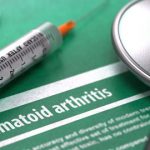I was fascinated when, some years ago, I first encountered the notion that rheumatoid arthritis (RA) was a new disease. The resultant focus by some rheumatologists to look for examples of RA in antiquity helped rekindle my own interest in the arts.1,2
The Historical View
The first series of patients with classic RA appeared in 1800, described by a French medical student, Augustin-Jacob Landre-Beauvais, in his doctoral thesis, as recounted by Short in 1974. The term “rheumatoid arthritis” was introduced by Garrod in 1859.3,4 Watson, Buchanan, and Murdoch speculated further that RA, this new disease in history, was still evolving and would disappear perhaps by end of this century.5 Indeed, these intriguing essays provoked efforts to identify earlier examples of RA in art, literature, history, archeology, and paleopathology. Despite rather extensive investigations, it can be argued that RA was at least uncommon before the 19th century.6
What, then, might this suggest about the etiology or pathogenesis of RA? Buchanan and Murdoch wondered about a “slow virus” infection. Others thought about other microbes or lifestyle changes or consequences of the industrial revolution. Gerry Weissmann, a brilliant and imaginative thinker, and colleagues—including my friend and former colleague Elliot Rosenstein—hypothesized that importation of sugar from the West Indies to Europe and a resultant epidemic of periodontal disease was linked to the appearance of RA. The connection, Porphyromonas gingivalis, occuring in peridontitis, produces peptidyl arginine deiminase, which citrullinates proteins leading to inflammation and consequent RA.7-12
What’s the evidence? There is a link between sugar, periodontal disease, and RA. Weissmann has summarized the information about sugar trade between the Americas and Europe.8,9 West Indian sugar trade peaked in c. 1755–1765. Thereafter, the British government taxed molasses and sugar, “the white gold of the upper class.”
Of course, we know of the colonial reaction in 1773, protesting taxation without representation and dumping tea and sugar into Boston Harbor. By 1771, this tax netted England 326,000 pounds (revenue); by 1800, sugar consumption was 160 million pounds per year, providing 3 million pounds’ revenue by 1815. Tea flavored with sugar had reached the middle class.
Prime Minister Gladstone finally abolished the tax in 1874, in order to make sugar accessible to ordinary British people. It was during that time that tooth decay and periodontal disease increased and RA appeared.8,9
What the Research Shows
What is the connection between periodontal disease and RA? They share pathogenetic mechanisms and immunologic and pathologic findings. Elliot and his wife Laura Kushner (a periodontologist), together with Robert Greenwald and Gerry Weissmann, have summarized these. Both share HLA-DRR4. Oral pathogens promote elaboration of rheumatoid factors. Immunologic events include generation of immune complexes and complement with phagocyte activation. And P. gingivalis uniquely possesses the enzyme peptidyl arginine deiminase (PAD), which can deiminate arginine in fibrin.7 Others have reported the association of the two disorders and certain of their clinical manifestations.13-17

